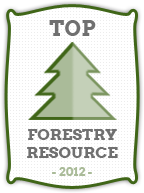 I thought it might be nice to go back and cover some of the basics about forestry for the benefit of readers who want to learn more. Specifically, I think some of you have been waiting for tree ID posts since I started this blog. I know I get excited about knowing what plants are around us.
I thought it might be nice to go back and cover some of the basics about forestry for the benefit of readers who want to learn more. Specifically, I think some of you have been waiting for tree ID posts since I started this blog. I know I get excited about knowing what plants are around us.
This might be old news to many of you, but I’m going to start doing species profiles of native woody plants in this area. What better way to start than with one of the most common sights in the Pacific Northwest: the Douglas-fir!
The first thing to know is its many names, because they say a lot about this particular tree. The Latin name (genus and species) is Pseudotsuga menziesii. The species name refers to the person who discovered this tree, and the genus name means “false hemlock.”






